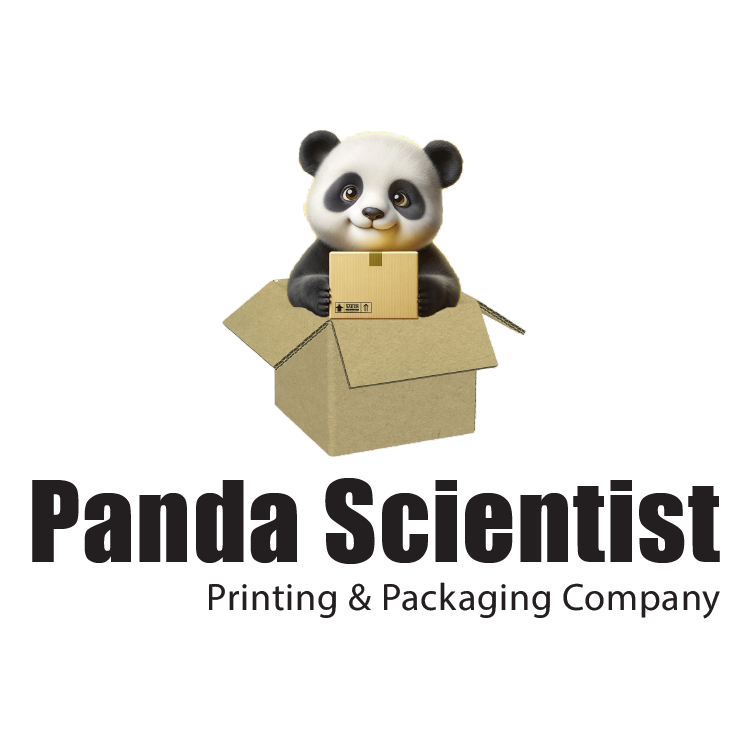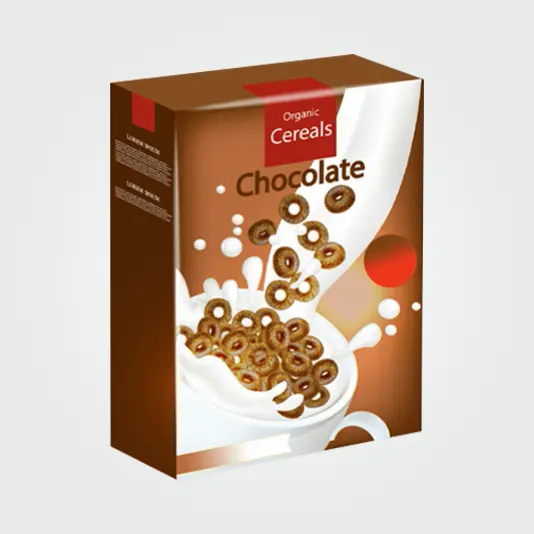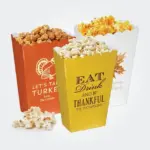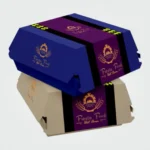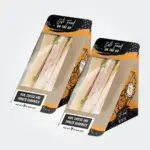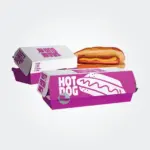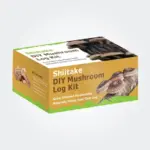Cereal Boxes
Custom Cereal Boxes
Dive into a breakfast adventure with our Custom Cereal Boxes, designed to keep your morning grains crunchy and delightful. Every box captures the vibrant energy of sunrise, setting the perfect mood for a nutritious start. Whether it’s for classic flakes, hearty oats, or kids’ favorites, our packaging caters to all palates and age groups. The design spectrum spans from wholesome, natural motifs to fun, animated themes, appealing to cereal enthusiasts everywhere. Combining top-tier preservation with a captivating visual presence, our Custom Cereal Boxes ensure that the most important meal of the day is also the most enjoyable.
Introduction
Cereal boxes have been a breakfast table staple in the United States for decades. These boxes serve not only as a container for the cereal itself but also as a powerful marketing tool for cereal manufacturers. This article will examine cereal boxes, their importance in the food industry, and the history of cereal box packaging in the United States.
Definition of Cereal Boxes
Cereal boxes are containers that hold cereal, typically made of cardboard or paperboard materials. They are designed to be lightweight and easy to handle while protecting the grain inside. Cereal boxes usually feature bright colors, bold graphics, enticing images of the cereal, and any accompanying prizes or promotions.
Importance of Cereal Boxes in the Food Industry
Cereal boxes play a crucial role in the food industry, serving as both a container for the cereal and a powerful marketing tool. The design and graphics of a cereal box can make all the difference in attracting consumers and building brand recognition. Cereal manufacturers invest heavily in cereal box design and printing, knowing that the right packaging can make or break a product’s success.
Brief History of Cereal Box Packaging in the United States
Cereal box packaging has existed in the United States since the late 1800s. The Kellogg brothers created the first cereal box in 1896 and packaged their cornflakes in a wax-paper bag inside a cardboard box. In the early 1900s, cereal boxes began to feature colorful graphics and bold branding, with companies like Post and Quaker Oats leading the way. By the mid-20th century, cereal box design had become a true art form, with bright colors, playful characters, and catchy slogans dominating the shelves of supermarkets across the country. Today, cereal box design continues to evolve, emphasizing sustainability and environmentally-friendly packaging materials.
Structural Components of a Cereal Box
The structural components of a cereal box are the various parts that make up the physical design and packaging of the box. These components serve different purposes and play a critical role in the overall function and effectiveness of the box. Here are the four main structural components of a cereal box:
Face Panel
The face panel is the front of the cereal box, where the brand and product names are displayed prominently. It is usually the box’s largest and most visible panel and is meant to catch the attention of shoppers browsing the store shelves. The face panel may also feature colorful graphics, images, or other design elements to enhance the appeal.
Side Panels
The side panels are the two long sides of the cereal box containing additional product information. This information may include nutritional facts, ingredients, serving size, and other product details. The side panels are often used to differentiate between different flavors or varieties of cereal within the same brand.
Back Panel
The back panel is the rear of the cereal box and is usually less visible than the face panel. However, it is still an important component of the cereal box design as it may contain additional information about the product, such as instructions, promotions, or giveaways. The back panel may also feature design elements, although these are usually less prominent than on the face panel.
Flaps
The flaps are the two pieces at the top and bottom of the cereal box that folds over to seal the contents. These flaps are essential for keeping the cereal fresh and preventing spills or damage during transport. The flaps may also feature additional design elements or information, such as serving suggestions or recipes. These four structural components create a cohesive and effective cereal box design. Each member serves a specific purpose and provides consumers with valuable information, helping them make informed purchasing decisions. A well-designed cereal box can differentiate a product from its competitors, create a strong brand image, and drive sales.
Types of Cereal Box Designs
Cereal boxes designs are essential for the marketing and branding of cereals. A well-designed cereal box attracts customers and creates a memorable brand image. There are different types of cereal box designs used in the packaging industry. The following are the types of cereal box designs:
Vertical Box Design
The vertical box design is also called the “tall box” design. This design features a tall, narrow box often used for cereals with a small footprint but higher volume. The box’s front panel is usually the largest, and the side panels contain nutritional information and other product details. This type of design is popular for cereals such as muesli and granola.
Horizontal Box Design
The horizontal box design is also called the “wide box” design. This design features a wide and shallow box often used for cereals with a large footprint but lower volume. The box’s front panel is usually smaller than in the vertical design, and the side panels contain nutritional information and other product details. This type of design is popular for cereals such as flakes and puffs.
Folding Cartons
Folding cartons are flat, pre-cut boxes that are folded into shape and then glued together. This type of design is commonly used for cereals that require more protection during shipping and handling. Folding cartons are typically made of paperboard, which is lightweight and can be easily printed with colorful designs.
Display Cartons
Display cartons are boxes placed on store shelves for easy display. They are often used for promotional campaigns or to showcase new products. Display cartons are typically made of sturdy cardboard or plastic and may feature bold graphics or other design elements to attract customers. Each type of cereal box design has unique advantages and disadvantages, depending on the type of cereal and the intended target market. The choice of cereal box design ultimately depends on the manufacturer’s marketing strategy, the target audience, and the overall product branding. A cereal box design aims to capture the customer’s attention, communicate key product information, and create a memorable brand image that will inspire customers to purchase the product.
Popular Cereal Box Design Trends in the United States
The cereal boxes design is an ever-evolving field that seeks to attract new customers while keeping existing ones engaged with fresh and exciting packaging. Several popular cereal box design trends have emerged in the United States recently. Here are some of the most notable:
Minimalism
Clean lines, simple typography, and a stripped-down color palette characterize the minimalist cereal box design. This design trend often features large areas of white space with minimal design elements. The minimalistic approach is intended to convey a sense of sophistication and modernity, which can be particularly appealing to younger consumers.
Vintage
Vintage cereal boxes design seeks to evoke a sense of nostalgia by drawing on design elements from the past. This trend often features retro typography, vintage imagery, and a muted color palette reminiscent of the 1950s and 1960s. The vintage trend has become increasingly popular as consumers seek products that offer comfort and familiarity in uncertain times.
Illustrative
Superior cereal box design features detailed and colorful illustrations intended to capture the customer’s attention. This design trend often features whimsical or fantastical imagery designed to appeal to younger consumers. Superior design can be particularly effective for cereals marketed to children, as it can help create a sense of fun and excitement.
Sustainability
Sustainable cereal boxes design seeks to minimize the environmental impact of packaging by using recycled materials, reducing packaging waste, and incorporating eco-friendly design elements. This trend often features natural or earthy colors and design elements that highlight the sustainability of the packaging. Sustainable packaging is becoming increasingly important to consumers, particularly younger consumers who are more environmentally conscious.
Personalization
Personalized cereal box design connects the customer and the product by incorporating the customer’s name or other personal details into the packaging. This design trend can be particularly effective for marketing campaigns or promotional events, as it creates a sense of exclusivity and personalization that can appeal to consumers.
Interactive
Interactive cereal boxes design creates a sense of engagement between the customer and the product by incorporating interactive design elements. This trend often features augmented reality (AR) or QR codes that allow customers to scan the box with their smartphone to access additional content or play games related to the cereal. Interactive design can be particularly effective for younger consumers who are more tech-savvy and seek engaging experiences.
Bold Typography
Bold typography cereal boxes design features large, eye-catching typography intended to capture the customer’s attention. This design trend often features bright, bold colors and typography to stand out on store shelves. Bold typography can be particularly effective for new products or limited-edition releases, as it can create a sense of excitement and urgency among consumers.
Health and Wellness
The health and wellness cereal box design seeks to communicate the nutritional benefits of the cereal to the customer. This design trend often features design elements that highlight the cereal’s high fiber content, low sugar content, or other health benefits. Health and wellness design can be particularly effective for cereals marketed to health-conscious consumers or as a healthy breakfast option.
Seasonal
Seasonal cereal boxes design seeks to create a sense of seasonality by incorporating design elements associated with a particular season or holiday. This design trend often features seasonal imagery, such as snowflakes or fall leaves, or incorporates design elements related to a specific holiday, such as Easter or Halloween. Seasonal design can be particularly effective for limited-edition releases or promotional campaigns.
Bold Colors
Bold color cereal boxes design features bright and vibrant colors to capture the customer’s attention. This design trend often features contrasting colors or color schemes designed to stand out on store shelves. Bold color design can be particularly effective for cereals marketed to children or as a fun and exciting breakfast option. There are many popular cereal box design trends in the United States, each with unique advantages and target markets. By incorporating design elements that reflect the brand’s values and resonate with the target market, manufacturers can create packaging that helps build brand loyalty and drive sales.
Cereal Box Printing
Cereal box printing is a crucial aspect of cereal box packaging. The printing process used in cereal box production can significantly impact the final product’s visual appeal and the manufacturer’s ability to differentiate its brand from competitors. This section will discuss the printing processes used in cereal box production, common materials used for cereal box printing, and important considerations for cereal box printing.
Printing Processes Used in Cereal Box Production
Several printing processes are used in cereal boxes production, including flexography, lithography, and digital printing. Flexography, also known as “flexo,” is a printing process that involves a flexible relief plate, ink, and a printing cylinder. The plate is mounted on the cylinder, and as the cylinder rotates, the ink is transferred to the cereal box material. Lithography, also known as “offset printing,” is a printing process that involves a printing plate, ink, and a rubber blanket. The plate is mounted on a cylinder, and the ink is transferred to the rubber blanket, which moves the ink to the cereal box material. Digital printing is a printing process that involves using digital technology to print directly onto the cereal box material. This process allows for greater design flexibility and can be particularly useful for short runs or limited-edition releases.
Common Materials Used for Cereal Box Printing
Cereal boxes printing is typically done on paperboard, a thick, sturdy paper product that can withstand the weight of the cereal and provide protection from moisture and air. Paperboard is also printable, making it an ideal material for cereal box packaging. The most common type of paperboard used for cereal box printing is SBS (solid bleached sulfate) board. SBS board is a high-quality, bright white paperboard that provides a smooth surface for printing and is durable enough to protect the cereal during shipping and handling.
Important Considerations for Cereal Box Printing
Several important considerations for cereal box printing include color accuracy, design clarity, and print quality.
Color accuracy: is crucial in cereal boxes printing, as the colors on the box must accurately reflect the product inside. Manufacturers should work closely with their printers to ensure the colors are accurate and consistent across all packages.
Design clarity: is also essential in cereal box printing. The design must be clear and easily read, even from a distance. Manufacturers should consider using large fonts and bold colors to ensure the format is legible and attention-grabbing.
Print quality: is also crucial in cereal box printing. The printing must be crisp and clear, with no blurring or smudging. Manufacturers should work with their printers to optimize the printing process for the specific cereal box material used.
Cereal boxes printing is a critical aspect of cereal box packaging. By using high-quality printing processes and materials and ensuring color accuracy, design clarity, and print quality, manufacturers can create packaging that stands out on store shelves and helps to build brand loyalty.
Sustainability and Cereal Box Packaging
Cereal boxes packaging has been scrutinized recently due to its environmental impact. In this section, we will discuss the ecological effects of cereal box packaging, sustainable cereal box packaging alternatives, and efforts by cereal manufacturers to reduce packaging waste.
Environmental Impact of Cereal Box Packaging
Cereal box packaging is typically made of paperboard, a renewable resource. However, producing paperboard requires significant amounts of water and energy, and the disposal of used cereal boxes can contribute to landfill waste. Some cereal boxes contain additional layers of plastic or aluminum to provide extra protection or to make them resealable. These other materials can make cereal boxes difficult to recycle and can increase their environmental impact.
Sustainable Cereal Box Packaging Alternatives
There are several sustainable cereal box packaging alternatives that manufacturers can consider, including:
Using recycled materials
By using recycled paperboard, manufacturers can reduce their reliance on virgin materials and decrease the environmental impact of their packaging.
Using biodegradable or compostable materials
Manufacturers can consider using biodegradable or compostable materials for their cereal box packaging. These materials break down more easily than traditional materials and can reduce landfill waste.
Reducing packaging size
Manufacturers can reduce the size of their cereal boxes, decreasing the material used and reducing transportation costs.
Efforts by Cereal Manufacturers to Reduce Packaging Waste
Cereal manufacturers have made efforts to reduce packaging waste in recent years. Some examples include:
Lightweight
Cereal manufacturers have worked to reduce the weight of their cereal boxes while maintaining the same level of protection. This reduces the amount of material used and can decrease transportation costs.
Recycling programs
Some cereal manufacturers have implemented recycling programs to encourage consumers to recycle their used cereal boxes.
Sustainable sourcing
Cereal manufacturers have started to source their materials from sustainable sources, such as FSC-certified forests, to reduce their environmental impact.
Alternative packaging
Some cereal manufacturers have started experimenting with alternative packagings, such as pouches or refillable containers, to reduce their reliance on traditional cereal boxes.
Cereal box packaging can have a significant impact on the environment, but there are sustainable alternatives that manufacturers can consider. Manufacturers can decrease their environmental impact by using recycled, biodegradable or compostable materials or reducing packaging size. Additionally, efforts by cereal manufacturers to reduce packaging waste, such as lightweight and implementing recycling programs, can help further to reduce the environmental impact of cereal box packaging.
Marketing and Cereal Boxes
The cereal box design is critical in marketing and can greatly impact consumer behavior. In this section, we will discuss the role of cereal box design in marketing, the use of cereal box promotions and giveaways, and the impact of cereal box design on consumer behavior.
Role of Cereal Box Design in Marketing
The cereal boxes design is an essential aspect of marketing because it is often the first thing consumers see when purchasing a product. Cereal manufacturers use packaging design to differentiate their products from competitors and to communicate their brand identity. Effective cereal box design can convey important information to consumers, such as the cereal’s nutritional value, ingredients, and serving size. Additionally, the cereal box design can connect consumers emotionally by evoking nostalgia, humor, or other emotions.
Use of Cereal Box Promotions and Giveaways
Cereal manufacturers often use promotions and giveaways to incentivize consumers to purchase their products. Promotions and giveaways can take many forms, such as:
- Free toys or prizes inside the cereal box
- Discounts or coupons for future purchases
- Collectible items, such as sports cards or movie tie-ins
These promotions and giveaways can increase consumer interest in a particular cereal and drive sales.
Impact of Cereal Box Design on Consumer Behavior
Cereal box design can have a significant impact on consumer behavior. Research has shown that consumers make purchase decisions based on creating a product’s packaging. Cereal box design can influence a consumer’s perception of the product’s quality, healthiness, and taste. For example, bright, bold colors can make a cereal appear more fun and appealing to children, while earthy, natural dyes can suggest that cereal is healthy and organic. Cereal box design can also influence consumer behavior by creating a sense of urgency or scarcity. Limited edition or seasonal cereal box designs can encourage consumers to purchase the product before it is unavailable.
The cereal boxes design is a critical aspect of marketing and can greatly impact consumer behavior. Effective cereal box design can convey important information about a product and create an emotional connection with consumers. Additionally, promotions and giveaways can incentivize consumers to purchase a particular cereal. Cereal manufacturers should consider the impact of cereal box design on consumer behavior when developing their packaging strategies.
Future Trends in Cereal Box Packaging
Advances in Cereal Box Design Technology
Advances in technology are driving innovation in cereal boxes design. For example, augmented reality (AR) technology creates interactive cereal box designs that engage and educate consumers. With AR, consumers can scan a cereal box with their smartphone or tablet and see animated characters or educational content related to the cereal. Digital printing technology is also improving the quality and efficiency of cereal box printing. This technology allows for more vibrant colors, sharper images, and faster production times. In the future, we can expect to see more intricate and visually stunning cereal box designs as a result of these advances in technology.
Predictions for the Future of Cereal Box Packaging
As consumer preferences and lifestyles evolve, so will cereal box packaging. Some predictions for the future of cereal box packaging include the following:
- Greater emphasis on convenience: As consumers seek more convenient and portable food options, cereal manufacturers may develop more compact and travel-friendly cereal box designs.
- Customization options: With the rise of e-commerce, cereal manufacturers may offer customization options for cereal box designs, such as personalizing the box with a name or photo.
- Health and wellness focus: As more consumers prioritize health and wellness, cereal manufacturers may highlight the nutritional benefits of their products through cereal box design.
- Multi-functional packaging: Cereal box packaging may become more versatile, with designs that can be repurposed as storage containers or serving bowls.
Potential Impact of Sustainability Trends on Cereal Box Packaging
As sustainability becomes an increasingly important consumer consideration, cereal boxes packaging may need to evolve to meet these demands. Sustainable cereal box packaging alternatives, such as compostable or recyclable materials, may become more widespread. Cereal manufacturers may explore new ways to reduce packaging waste and carbon emissions, such as using more efficient transportation methods or incorporating renewable energy into their production processes. The future of cereal box packaging is likely shaped by technological advances, evolving consumer preferences, and sustainability trends. As cereal manufacturers strive to meet the changing needs of consumers, we can expect to see more innovative and sustainable cereal box designs in the years to come.


